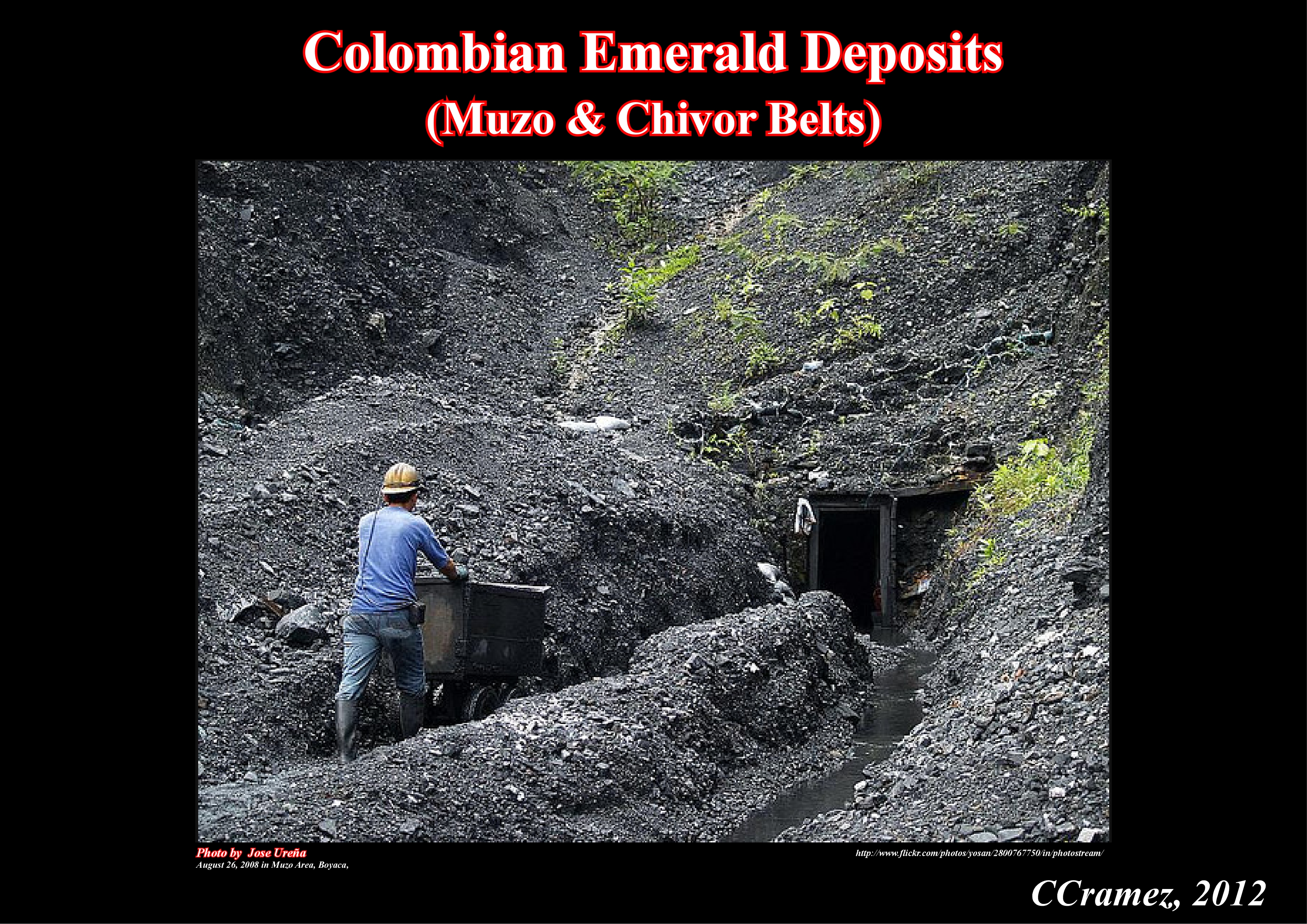

This is the Home Page of an essay on Tectonics Inversions & Emerald Deposits, in which we compare the origin of Colombian's emerald deposits (particularly of Muzo and Chivor Belts) with some Colombian's oil accumulations, such Cusiana field.
If you click on the interlinks (underlined text and bots), you can navigate and you will find the text and plates composing these notes.
click on the underlined text
Tectonic Inversions & Emerald Deposits
by
C. Cramez

Abstract:
In spite of the great amount of emerald deposits throughout the world, the priorities in quality and volume of extracted rough material are the sites of Colombia (Muzo and Chivor emerald belts). This sites are know even before the Spanish conquistadores. Emeralds were extracted from Somondoco mine (today Chivor) since 1537 and from Muzo in 1567. Contrariwise to the majority of the emerald deposits of the world, which are associated with granitic rocks, the Colombian emerald deposits are associated with hydrofracturing (the main factor controlling emerald mineralization) and hydrothermal fluids, rich in beryl, chrome and vanadium, induced by a tectonic inversion of the deep Mesozoic backarc basin, which is also responsible of the majority of the petroleum systems of the foredeep and foldbelt areas (maturation of the source-rocks andcreation of structural traps). The host rocks of the emeralds are carbonaceous calsiltites (calcareous schists) rich in organic matter of Lower Cretaceous age, which are cut by calcite veins, which, often, contain emeralds, particularly when they are folded. Indeed, since long time (Cheilletz, A. and Giulliani, G., 1996) suggested a two-stage model for the formation of the Colombian emeralds : (i) Stage I is characterized by décollement planes (early compressional tectonic regime) within the carbonaceous calsiltites, hydrothermal fluid infiltration and wall-rock metasomatic alteration ; (ii) Stage II (late tectonic regime) deforms the previous veins by thrust-related folds (development of stratiform and hydraulic breccia), which are synchronous of the emerald mineralization. The resulting tectonic structures are complex fold patterns characterized by propagation anticlines with emerald veins and emerald hydraulic breccia in the apexes, as in Quipama, Tendenquema and Chivor mines. Otherwise stated, since all emerald exploitations are, presently underground, exhaustive geological and particularly structural studies are required to reduce the probability of disappointments. The color of emeralds is from light green to thick green with obvious pleochroism. They appears with different colors when observed at different angles, especially with polarized light. The emeralds from Coscuez deposits have a homogeneous intensive color and bluish tone. At Muzo deposit, the emeralds have middle or dark green color with yellowish tone. At the Chivor deposits, the emeralds have less intensive green color with slight bluish tone. The typical inclusions are albite and pyrite, as well as long bubbles with three phase-inclusions according the zones of growth and along the crystal shapes.
The following short-courses are available in UFP Repositório Institucional (Browsing by Author......... Cramez Carlos) :
- Basic Principles in Tectonics ;
- Bassins Sédimentaires et Systèmes Pétroliers ;
- Salt Tectonics ;
- Seismic Interpretation ;
- Systemic Stratigraphy Seminar ;
- Foredeep & Fold Belts ;
- Volume Problems ;
- Hydrodynamism ;
- Turbidite Systems ;
- Sequence Stratigraphy;
- Rocky Mountains ;
- Offshores Profonds ;
- Probabilistic Reserve Assessment ;
- Atlantic-type Divergent Continental Margins ;
- Stratigraphic Cycles and Potential Source rocks ;
- Campos Gigantes de Finales de los 80 asociados con Subducción tipo "A" in Suramérica.
Send E-mail to carloscramez@gmail.com with questions or comments about these notes.
Copyright © 2012 CCramez
Last modification: December, 2014